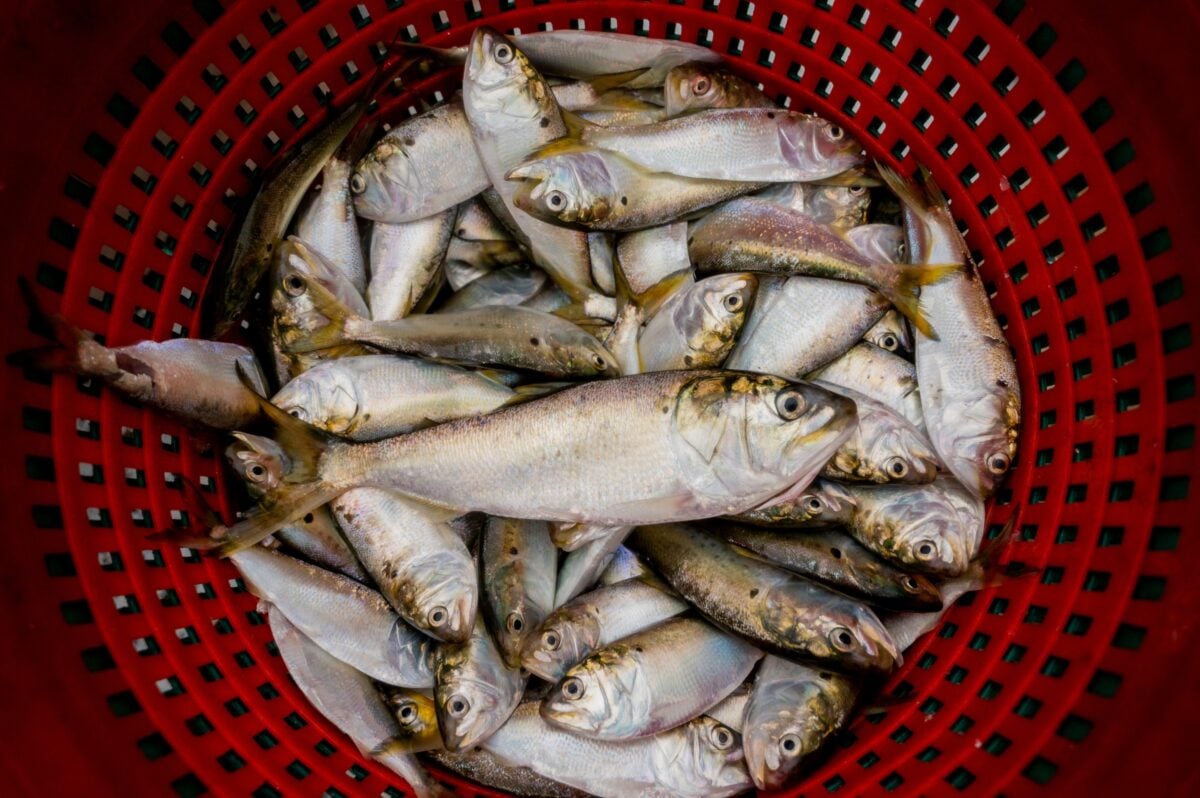
That perennial issue of menhaden continues to divide people around the Chesapeake Bay.
The Atlantic States Marine Fisheries Commission released its latest stock assessment on Thursday, ahead of a meeting in two weeks. The report concludes that Atlantic menhaden are not overfished and that overfishing is not occurring.
Using the Beaufort Assessment Model, researchers re-evaluated coastwide menhaden populations and revised the species’ natural mortality rate after discovering an error in earlier tagging analyses. The lower mortality estimate led to slightly lower estimates of total biomass and spawning potential, and slightly higher estimates of fishing pressure than in previous reports. Even so, egg production remains above the threshold required to sustain the stock, though below the target, and fishing mortality is below the overfishing threshold but above the target.
Menhaden landings have been steady under a coastwide total allowable catch of 233,550 metric tons for 2023–2025. About 70 percent of that total came from the reduction fishery, Omega Protein in Reedville which converts menhaden into fish meal and oil, while the bait harvest, supplying blue crab, lobster, and recreational fisheries, accounted for roughly 50,000 metric tons in 2023.
Juvenile abundance indices show strong year classes in 2016 and 2021–2023, suggesting stable recruitment. Adult abundance was high from 2019 through 2022 before a dip in 2023, a pattern consistent with natural population variability rather than a management failure.
Looking ahead, projections indicate that under current catch limits the fishery should remain within sustainable bounds through at least 2028, with only a 4 percent chance that fishing pressure would exceed the ecological reference point threshold.
Advocacy groups remain split. The Chesapeake Bay Foundation said, “There are fewer menhaden along the Atlantic Coast than previously thought, leading to potential major catch reductions… Forecasts show that the menhaden catch must be cut in half to provide a better than 50 percent chance of a sustainable menhaden harvest in the future… This comes amidst mounting warning signs linked to menhaden in the Chesapeake Bay.”
By contrast, the Menhaden Fisheries Coalition, citing a Maryland DNR survey of rockfish and menhaden released yesterday, said the survey “confirms Atlantic menhaden in the Chesapeake Bay are widespread for the third consecutive year,” reinforcing last year’s finding that juvenile menhaden were at their highest levels since 1990 and “directly contradicting claims… that menhaden are absent from Maryland waters.”
Several stakeholders have called for an independent, comprehensive study of the stock. But with positions this far apart, agreeing on methodology—and accepting the results—may prove difficult.












